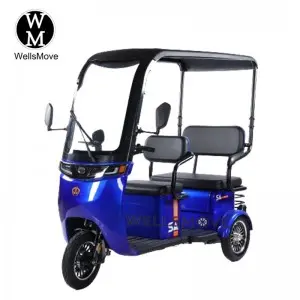Steering accuracy test of elderly mobility tricycles: the key to ensuring safety and performance
In the market of elderly mobility tricycles, steering accuracy is one of the important indicators to measure vehicle performance and safety. For international wholesale buyers, understanding and verifying the steering accuracy of products is a key step to ensure that they meet market demand and safety standards. This article will introduce in detail the methods, standards and importance of steering accuracy testing of elderly mobility tricycles to help buyers better evaluate the quality and performance of products.
1. The importance of steering accuracy
The steering accuracy of elderly mobility tricycles directly affects the handling and safety of the vehicle. An accurate steering system can ensure that the vehicle can respond to the driver’s operating instructions smoothly and accurately during driving, reducing the risk of accidents caused by inaccurate steering. For elderly users, the ease of use and reliability of the steering system are particularly important because they may face slow reaction speed or unskilled operation during driving.
2. Key indicators of steering accuracy test
(I) Steering angle accuracy
Steering angle accuracy refers to the degree of match between the angle of handlebar rotation and the actual steering angle of the vehicle. Accurate steering angle can ensure the stability and safety of the vehicle when turning. Generally speaking, the steering angle test can be carried out by the following methods:
Static test: Use an angle measuring tool (such as a protractor or an electronic angle sensor) to directly measure the steering angle of the handlebar and compare it with the steering angle of the vehicle’s wheels.
Dynamic test: During the vehicle’s driving, the changes in the steering angle are recorded by sensors installed on the wheels and analyzed synchronously with the steering angle of the handlebar.
(II) Steering torque range
The steering torque refers to the torque required by the driver when operating the handlebar. A reasonable steering torque range can ensure that the driver does not feel too strenuous or too light during operation. According to relevant standards, the steering torque of the elderly mobility tricycle should be controlled between 5-20N·m. Methods for testing steering torque include:
Static load test: Use a torque sensor to measure the steering torque of the handlebar under different load conditions.
Dynamic road test: During actual driving, the changes in steering torque are recorded by driving the robot system.
(III) Steering response time
The steering response time refers to the time interval from the start of the handlebar turning to the actual start of the vehicle turning. A shorter steering response time can improve the vehicle’s handling and safety. The steering response time test can be carried out by the following methods:
Sensor recording: Install sensors on the handlebars and wheels respectively to record the time difference between the handlebar rotation and the wheel steering.
Video analysis: Record the steering process with a high-speed camera and calculate the steering response time with video analysis software.
3. Standards and specifications for steering accuracy testing
(I) International standards
In the international market, the steering accuracy test of elderly mobility tricycles needs to comply with relevant international standards. For example, the ISO standard puts forward clear technical requirements for the vehicle’s steering system, including steering angle accuracy, steering torque range, and steering response time. These standards provide unified specifications for product design, production and testing to ensure product quality and safety.
(II) Domestic standards
In China, the steering accuracy test of elderly mobility tricycles is also strictly regulated. The relevant standards have detailed provisions for the vehicle’s steering system, including steering angle, steering torque, and steering response time. The implementation of these standards helps to improve the overall quality level of the product and ensure the safety of consumers.
4. Methods and tools for steering accuracy testing
(I) Static test method
Static testing mainly evaluates the vehicle’s steering system through measuring tools and equipment. For example, angle measuring tools are used to measure the steering angle of the handlebar, and torque sensors are used to measure the steering torque. The advantages of static testing are simple operation and low cost, but it cannot fully simulate the steering performance under actual driving conditions.
(II) Dynamic test method
Dynamic testing comprehensively evaluates the vehicle’s steering system by simulating actual driving conditions. For example, a drum test bench is used to simulate driving conditions of different slopes, and the various parameters during the steering process are recorded by the driving robot system. Dynamic testing can more realistically reflect the steering performance of the vehicle in actual use, but the test equipment is expensive and complex to operate.
(III) Test tools
Steering accuracy testing requires the use of a variety of professional test tools and equipment, including:
Angle measurement tools: such as protractors, electronic angle sensors, etc., used to measure the steering angle of the handlebar.
Torque sensor: used to measure steering torque.
Drum test bench: used to simulate different driving conditions.
Driving robot system: used to record various parameters during the steering process
Post time: Jul-07-2025



